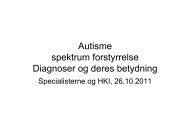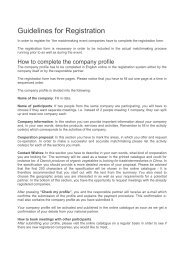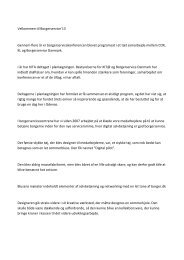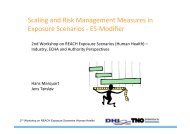11-13 May 2012 Helsingør - Denmark www.networkbio.org
11-13 May 2012 Helsingør - Denmark www.networkbio.org
11-13 May 2012 Helsingør - Denmark www.networkbio.org
Create successful ePaper yourself
Turn your PDF publications into a flip-book with our unique Google optimized e-Paper software.
MAREIKE WEIMANN*, JONAThAN WOODSMITh*, ARNDT GROSSMANN, zIYA özKAN, PETRA BIRTh,<br />
DAVID MEIERhOfER, SASChA SAUER, ULRICh STELzL<br />
OTTO-WARBURG LABORATORY, MAx-PLANCK INSTITUTE fOR MOLECULAR GENETICS (MPIMG), BERLIN<br />
A Y2H-seq approach to define the protein methyltransferase interactome<br />
Protein methylation, in particular on arginine and lysine residues, is a physiologically important post translational<br />
modification (PTM). Whilst a large number of human methyltransferases (PMTs), potential demethylases<br />
(DeMs) and methyl-recognition domain containing genes are annotated in the human genome,<br />
systematic characterisation of this PTM remains poorly developed. Canonically studied with regards to its<br />
role epigenetic regulation, methylation components or substrates have been shown to have diverse subcellular<br />
localisations and molecular functions, indicating a wider role in cellular physiology. However, the lack<br />
of affinity reagents and appropriate tools to detect methyltransferase substrate pairs has largely hampered<br />
progress in defining the global role of non-histone protein methylation.<br />
Here we present a novel proteome wide Y2H protein interaction screening approach involving a 2nd generation<br />
sequencing readout that has a significantly improved sensitivity in comparison to our state of the art<br />
Y2H matrix screening protocol. Furthermore, the sequencing readout provides a quantitation that correlates<br />
very well with the retest success rate, indicative of the quality of the PPI information. Importantly, the workflow<br />
presented here allows for rapid scalability using advances in sequencing technology to enable Y2H-seq<br />
to accelerate large scale interactome mapping efforts.<br />
We applied the Y2H-seq method to comprehensively screen proteins involved in either methylation or<br />
demethylation. We present a network of >500 interactions involving 22 PMTs or putative DeMs and 324<br />
potential methylation substrates. The network is validated using co-IP experiments and will serve as a major<br />
informational resource to define cellular roles of protein methylation Furthermore, 7 candidate proteins are<br />
characterized with respect to novel R and K methylation sites using a mass spectrometry approach, highlighting<br />
the utility of the network to identify enzyme-substrate pairs.<br />
abStractS For PoSterS abStractS For PoSterS<br />
MOhAMMAD MOBAShIR AND DR. TILO BEYER<br />
INSTITUTE Of MOLECULAR AND CLINICAL IMMUNOLOGY OTTO-VON-GUERICKE UNIVERSITY LEIPzIGER-<br />
STRASSE 44 39120 MAGDEBURG GERMANY CONTACT: MOhAMMAD.MOBAShIR@MED.OVGU.DE AND<br />
TILO.BEYER@MED.OVGU.DE<br />
Unraveling of Network Motifs in Signal Transduction Networks Using Evolutionary Approach<br />
Living <strong>org</strong>anisms control their behavior and cellular function by propagating signals across multiple levels.<br />
In T-cell signaling, the receptor, after receiving the signal activates downstream molecules that transmit the<br />
signal to the nucleus, in order to control cellular functions such as proliferation, differentiation, and apoptosis.<br />
During this process the change in the protein-levels, post-translational modification of the proteins, and<br />
interaction strengths affect the final response of the cell. To investigate possible design priciples we developed<br />
an in-silico model using evolutionary algorithm and ordinary differential equations. From our current<br />
simulations, we found that (i) kinetics of the final response of signaling pathway is predominantly controlled<br />
by the expression levels of proteins, (ii) the variations in protein-levels within the cell plays critical roles in<br />
controlling the kinetic behavior of the cell and consequently the cellular functions, and (iii) an increase in<br />
the interaction strengths up to a certain level leads to strong activation patterns, i.e. in the cells become<br />
sensitive to stimuli. Thus, it appears that the kinetic properties of the signaling network mainly determine<br />
the response threshold of a cell while the quantitative behavior is controlled by the expression levels of the<br />
proteins.<br />
50 / INB <strong>2012</strong> • <strong>11</strong>-<strong>13</strong> <strong>May</strong> <strong>2012</strong> <strong>www</strong>.<strong>networkbio</strong>.<strong>org</strong> / 51

















